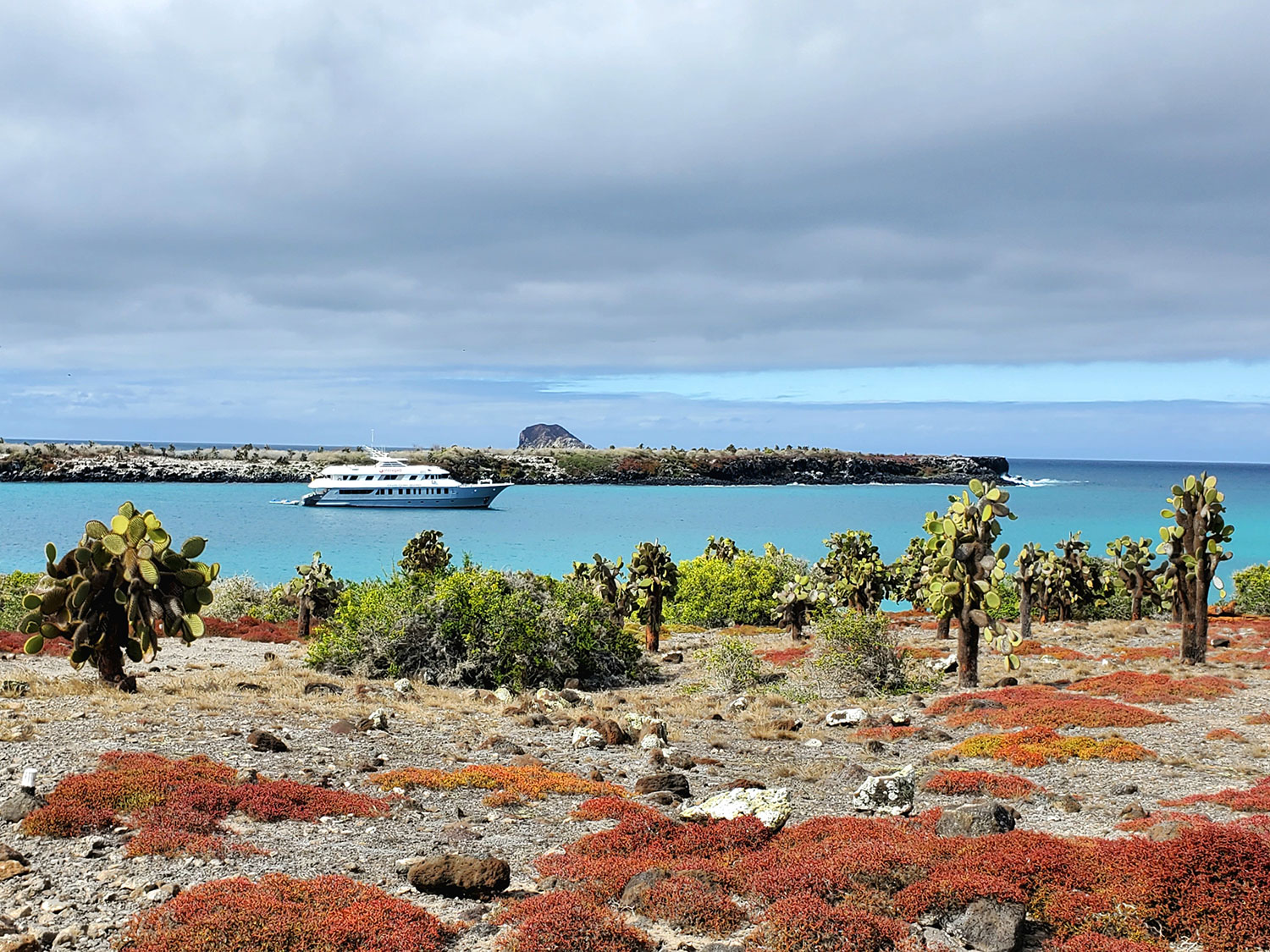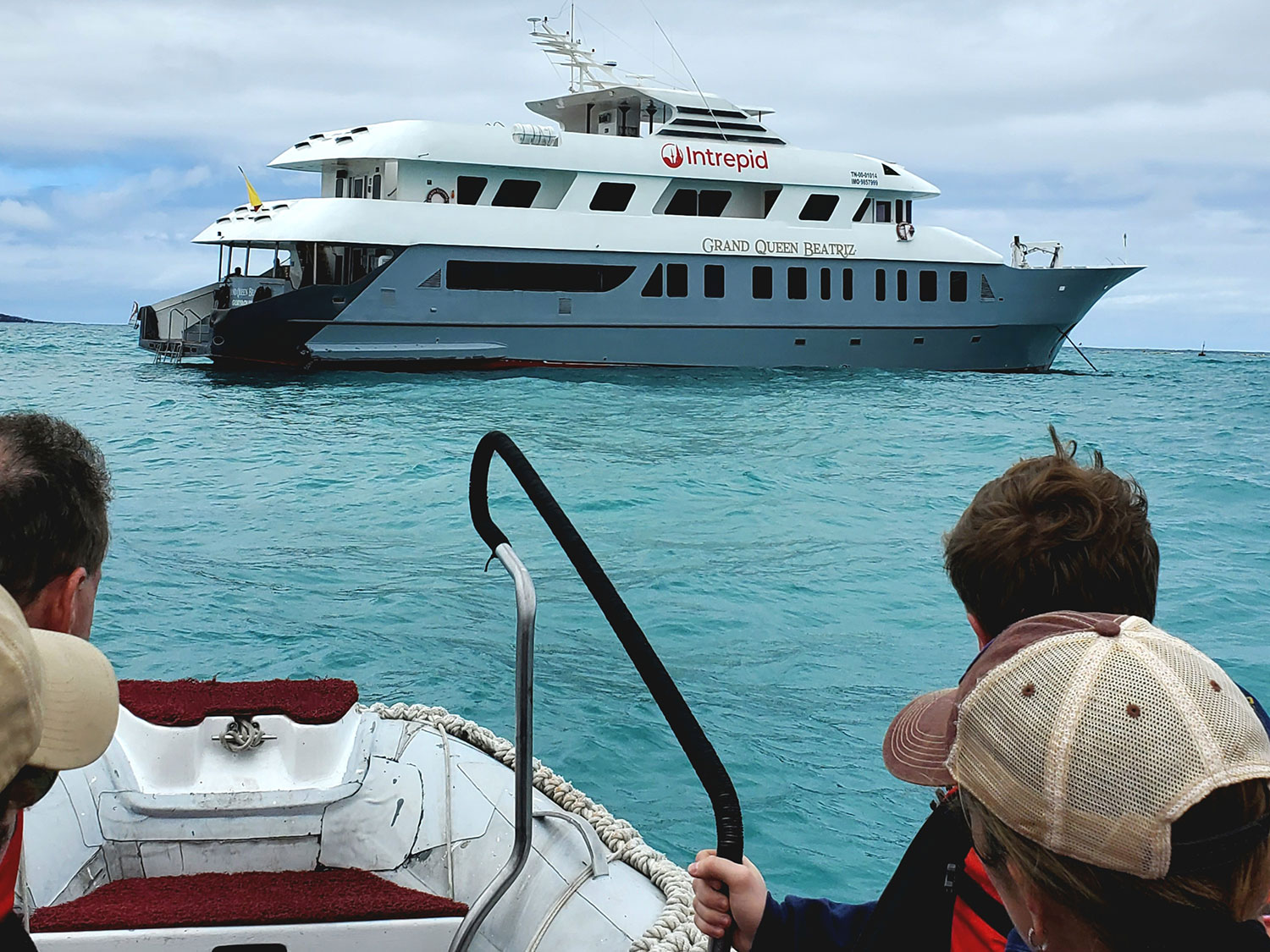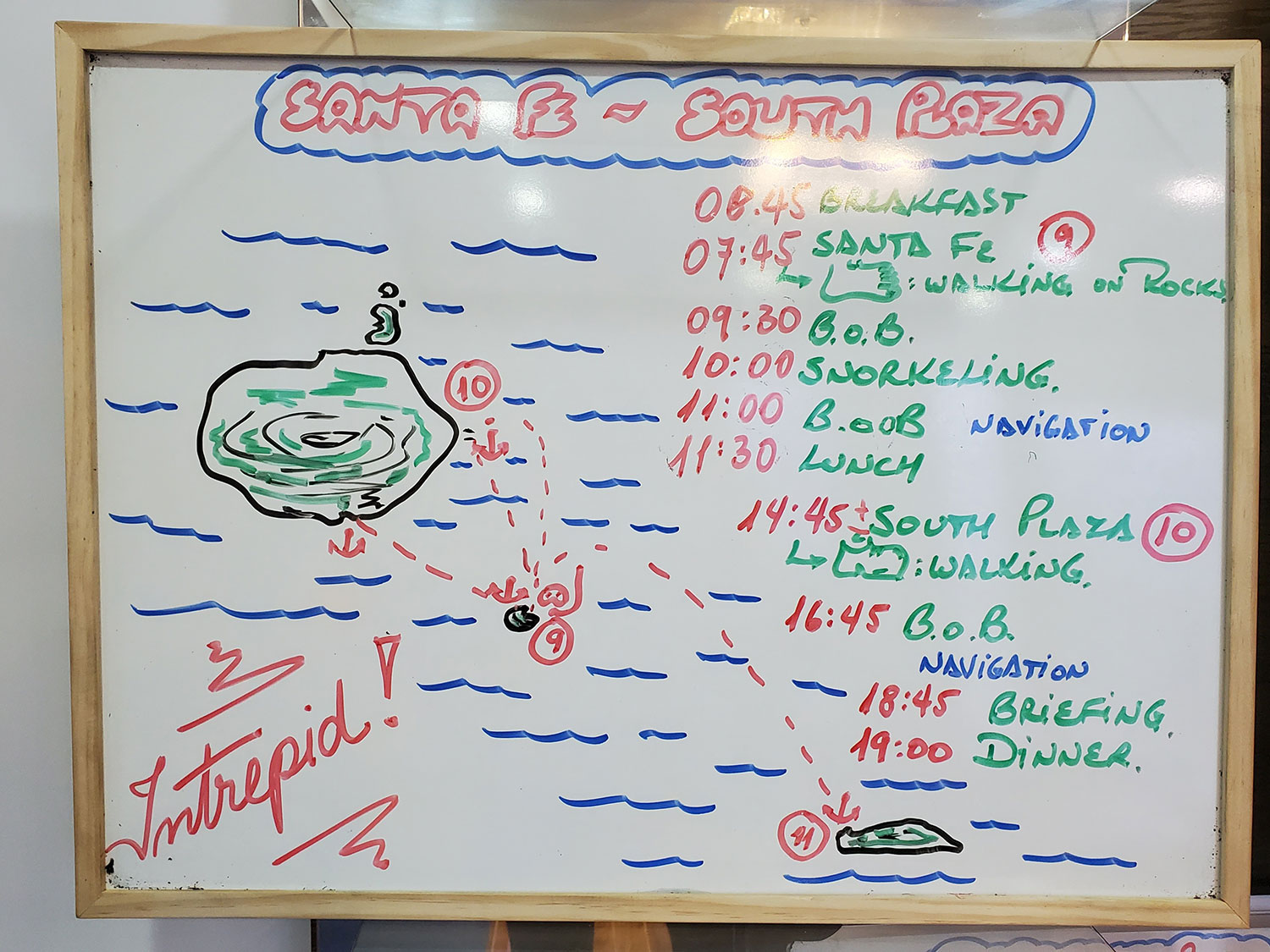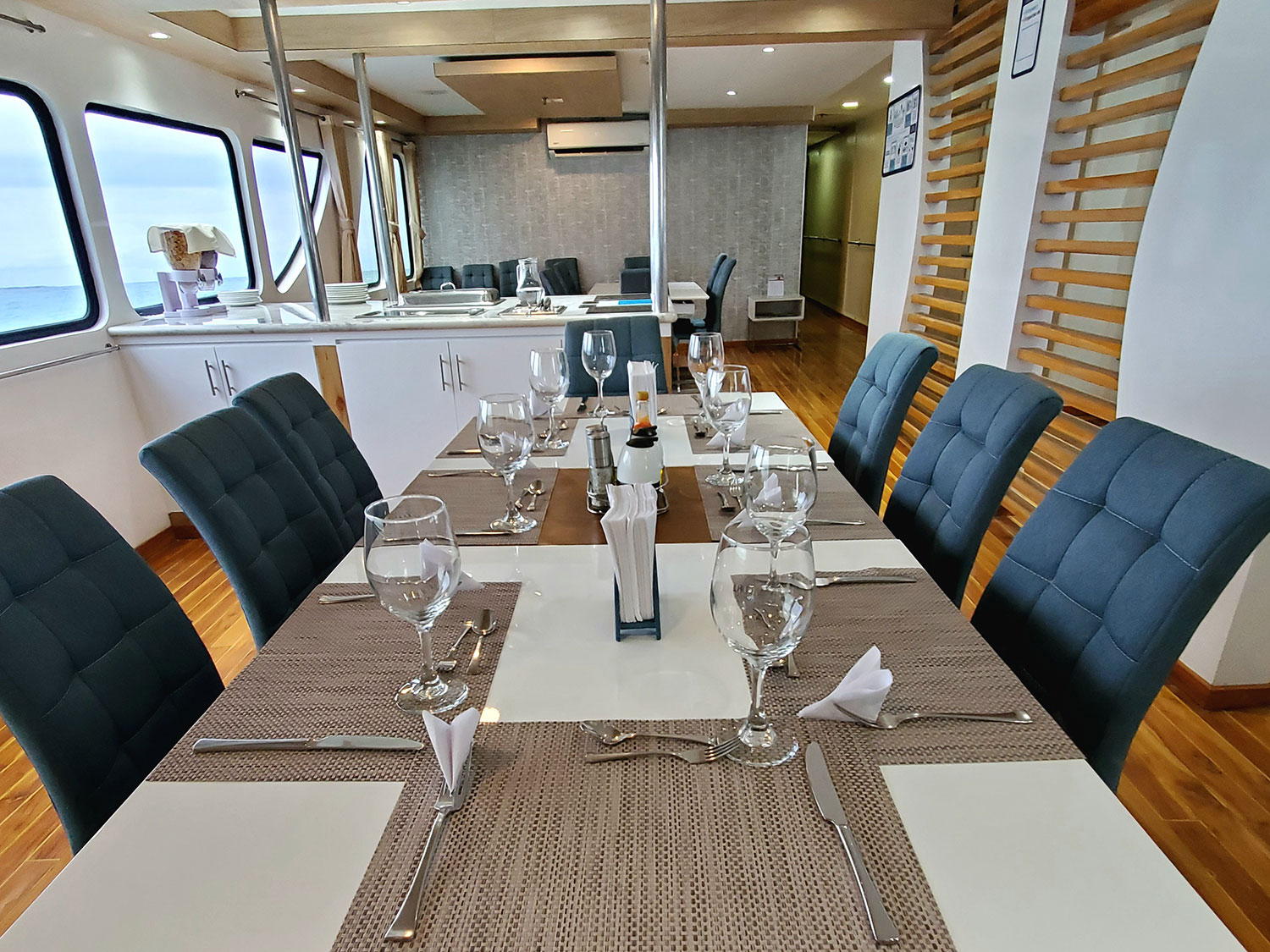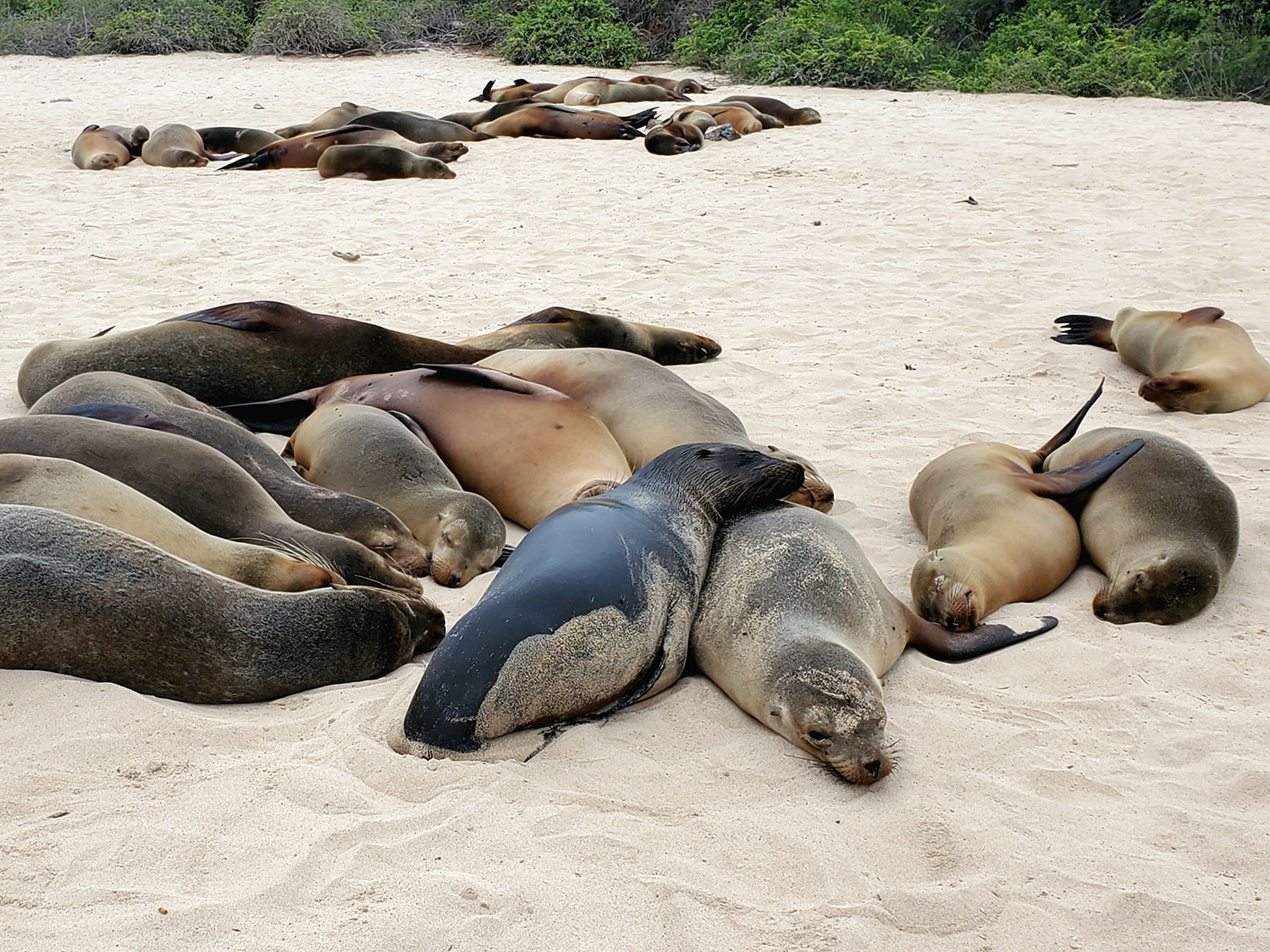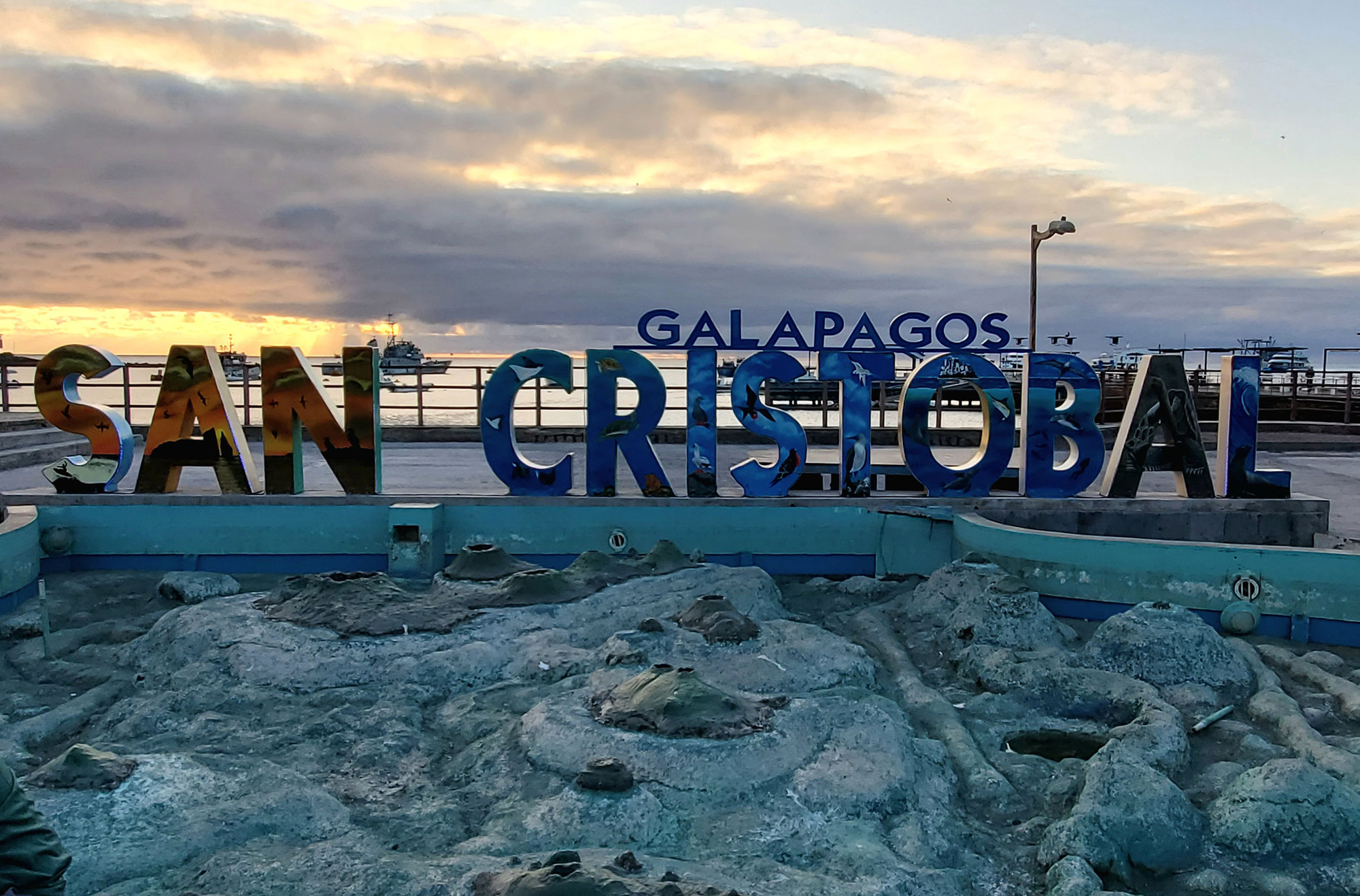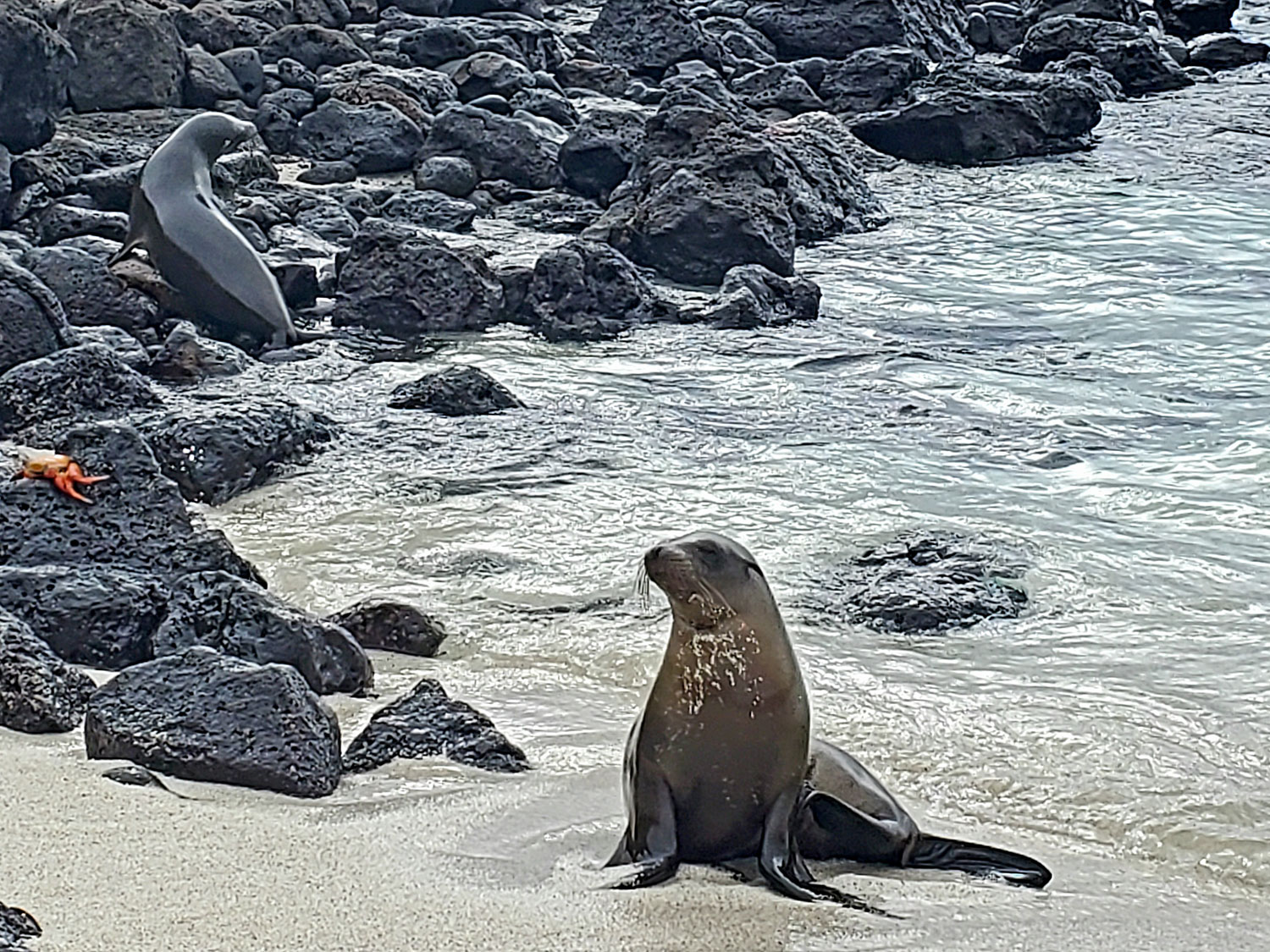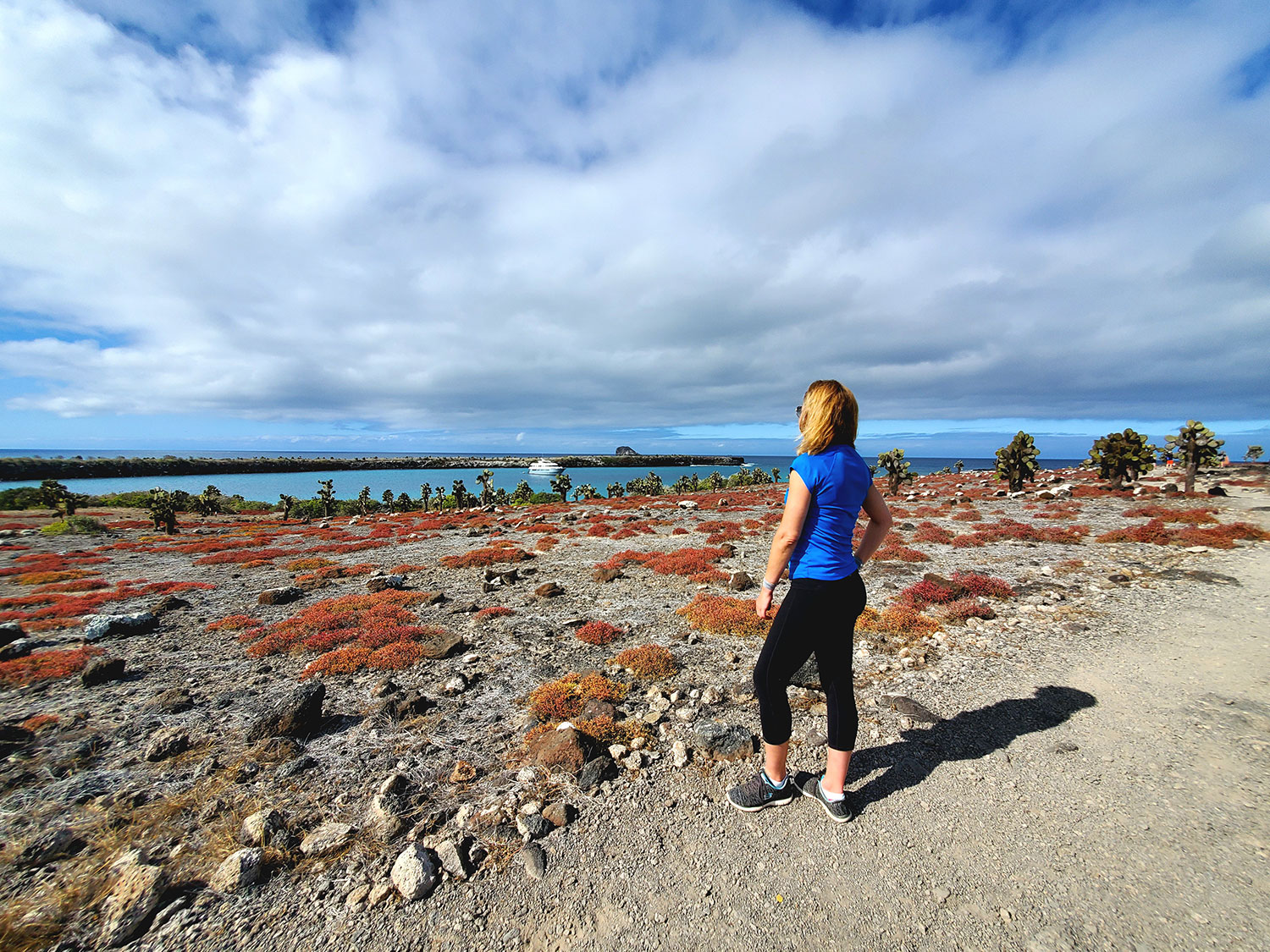How To Get The Most From Your First Trip To The Galapagos Islands
Sit back, enjoy the ride, and let Intrepid Travel be your guide in this wildlife-filled utopia.
I'll admit it: until recently, my associations to the Galapagos Islands were mainly limited to tortoises, penguins, and cute TV vet Ted Mullens. (That would be Alexis' pun-loving, on-again, off-again boyfriend, for fans of Schitt's Creek.) I'm not going to say that the island chain 600 miles off the coast of Ecuador wasn't a must-see destination for me; it just seemed that it was one of those elusive locales that's difficult to reach and tricky to logistically navigate once you are there.
Designated as a UNESCO World Heritage Site in 1978, this incredible spot arguably (and rightfully) remains perched atop many people's bucket lists like the treetop nests of the region's Red-footed Boobies. But what's the best strategy to tackle this far-flung archipelago that intrigued Charles Darwin with its unique species and wildly varying landscapes?
This past summer I embarked on a 7-day Galapagos tour with Intrepid Travel that started in Quito before we flew to Baltra, boarded a 16-passenger yacht, and sailed around the southern islands for five days to hike, spot wildlife, birdwatch, snorkel, and swim. Exploring the Galapagos via the sea really affords the best chance to see as much as possible.
Here are some things I learned that will make for smooth sailing during your own Galapadventure:
Book an itinerary that meets your needs
There are some islands you can visit without being part of an organized tour: Santa Cruz, San Cristobal, Isabela, and Floreana. However, others require you to travel via an operator and a guide. This makes it decidedly easier to navigate, since all details will be taken care of, leaving you to charge your camera and lace up your hiking shoes. Intrepid Travel offers cruises from six to 24 days to the southern, eastern, central, and western islands; some are designated for families, and others tack on time in Peru. Think about what you really want to see, how active you are, and the budget and time away you can afford. The islands of the Galapagos straddle the equator, and the warmest months will be January through April.
The itinerary I took is best suited for travelers who are relatively fit, as hikes often involve climbing, long walks may be on precarious rocks rather than on smooth sandy paths, and you'll be snorkeling and getting in and out of Zodiacs on the boat and from the beach—including wet landings. While you don't need to be a triathlete to get the most out of the trip, it helps if you are relatively agile. You do have the option to hang back on the boat for any activities, but the coolest stuff to see is in the water and on land. (Though I did manage to sneak in an energy-boosting nap after lunch most days in between activities.)
Pack the right gear
Intrepid has a super helpful guide with all the information you need for this trip, including a master packing list. The Galapagos maintains a well-protected ecosystem, so the boat stocks environmentally friendly toiletries. If you bring your own (including sunscreen and bug spray) make sure they are organic and reef safe, and pack over-the-counter medications as there will be limited opportunities to purchase them. Plastic bags are banned, so take any back home with you. Bring American cash for on-board gratuities, the cash bar, park entry fee, and spending money in San Cristobal. After a financial crisis in 2000, Ecuador switched its currency to the U.S. dollar, making it very convenient for Americans.
Other items I considered must-haves are a lightweight backpack, multiple swimsuits for the many snorkeling opportunities, layered clothing, long pants to keep the bugs at bay while hiking, raincoat or poncho, sunglasses, brimmed safari-style hat with a cord for windy Zodiac rides, and a refillable water bottle. Obviously, you'll want to be taking photos; our group's equipment ran the gamut from cell phones to digital SLRs with super telephotos lenses. A few passengers also packed wildlife guidebooks, a copy of "Origin of the Species" and Kurt Vonnegut's novel, "Galapagos."
The experience will be much more meaningful if you have some context—and sure, that includes watching the Schitt's Creek episodes where Ted is off studying those tortoises. (The name of the islands, by the way, is the old Spanish word for saddle, a term early explorers used for the enormous, slow reptiles.)
Get there and prepare
Americans headed to the Galapagos may fly first to Quito, serviced by airlines including United, Copa, American, Delta, and JetBlue; others may fly directly to Guyaquil. If you do travel through Quito, which at 9,350 feet is the second-highest world capital after La Paz, Bolivia, you may notice altitude-related effects including headache, nausea, and lightheadedness; over-the-counter medicines, water, and rest generally do the trick. The first evening we had a mandatory meeting in our hotel lobby, where we learned more about the inclusions of the trip and our travel schedule the next day, and asked questions.
The following day was pretty grueling, travel-wise, clocking in at 10 hours door-to-door. We left at 5 am for Mariscal Sucre Quito International Airport, where we bought a mandatory transit card ($20) and boarded our Avianca flight. After an hour stopover in Guayaquil, Ecuador's largest port, we continued to Baltra Island, a former U.S. World War II army base and current Ecuadorian military that along with San Cristobel is now one of two airports to serve the Galapagos.
After paying our mandatory entrance fee to the Galapagos National Park in cash, which is $100 for non-Ecuadorian adults and $50 for non-Ecuadorian children, we watched the sniffer-dogs inspect our luggage for smuggled wildlife species and animal parts. (This is a good time to use the restroom, grab a bottle of Endemica beer, and read the signage—Baltra is the world's first 100 percent green airport, which is very cool.)
After a bus ride to the port, we took a ferry across the channel to Santa Cruz, followed by a private transfer to the port where the Grand Lady Beatriz was docked. Our final transportation was a choppy Zodiac ride to our boat.
Ready yourself for life on the boat
Intrepid Travel categorizes its tours into different tiers according to the price and number of amenities. This trip was in the "Comfort" class, billed as having "more inclusions, more comfortable accommodation, and a more relaxed pace." Grand Queen Beatriz has eight two-person spacious cabins, some with balconies and others with windows, all with private bathrooms.
The vessel was built in 2018 and is technically considered a "yacht," though I would use that term loosely. It was well-appointed enough, with a communal dining area and bar on the main level, sitting room on the upper deck with snacks and drinks, and lounge chairs and a hot tub on the sun deck–perfect for relaxing after a long hike. Several inflatable dinghies are tethered for the many wet landings required during the trip, and wetsuits and snorkel gear are provided. There is something to be said for being able to snorkel, jump back on the boat, and enjoy lunch while the boat navigates to the next reef. Very cool.
Remember that you didn't come to the Galapagos for a luxury cruise but for the landscapes and air, land, and sea creatures, so manage your expectations and be ready for a few quirks. Itineraries are subject to change due to factors including weather and the presences of other tour groups, and you might not spot every species you came to see. I was a little disappointed to learn that we wouldn't have the opportunity to see any penguins, as they are located on the northern islands, but the amount of other birds, lizards, and sea lions I encountered along the way more than made up for it.
You will be off the grid for long stretches of time; we only had internet access when we were docked at the larger islands. The food is tasty and well-prepared, if not gourmet, and meals are usually served buffet style. If you are there in the cooler months, you will need to wear a wetsuit to snorkel.
Oh, and you can't flush toilet paper on the boat or on the islands, so dispose of it properly. Even if you aren't prone to seasickness, you might want to bring medicine and Sea-bands. The waters are purported to be the choppiest between June and August, though aside from our first day, I didn't find that to be noticeably so.
Enjoy your surroundings—responsibly
Since the only indigenous land mammal in the Galapagos is a species of rat that happens to be a vegetarian, the other native creatures don't view mammals (including humans) as a threat. Our guide instructed us to remain at least six feet away from them at all times, but don't be surprised if a water-seeking mockingbird lands on your shoulder while you are taking a swig out of your Yeti, or cotton-tufted blue-footed booby babies and their mamas nesting on the ground don't move an inch as you casually walk past them.
We also had a front-row seat to watch albatrosses engage in their elaborate mating ritual—a funky dance that's kind of like a sword fight with their beaks—and got up close and personal with playful sea lions who teased us as we snorkeled, sometimes coming right up to our masks. But while the urge to pet one of the many baby sea lions sunning on the beach is strong (we also joked about putting them in our backpacks and taking them home), it's important not to pet or touch any of the wildlife, as sea lions can actually be aggressive when approached, and mothers of many species will shun their young if they pick up a human scent. That also goes for feeding them; the only exception is hand feeding a fly to one of those mockingbirds—and they will come right up and take it from you. It's pretty amazing.
Be wowed
It's truly impossible to convey just how special and unique these islands are without experiencing them firsthand. Our guide, Roberto Quintana, briefed us every evening on where we'd be going and what we'd be seeing the following day. He accompanied us on every excursion and was on hand to provide expert commentary about the history, topography, geology, zoology, and more.
What was surprising and unexpected to me was how different the islands were from one another. Santa Fe, where we visited a tortoise sanctuary on the first day, is lush and green. South Plaza, home to many lizards—including one indigenous to that island—is craggy and dotted with succulents and ground brush. On Espanola, we hiked for three hours solely on rocks by the water. San Cristobal is barren and steep, requiring intense climbing. One afternoon, our boat circumnavigated Leon Dormido, the remnants of a volcano that impressively juts out of the water and reminded me of rock formations in Thailand; another day we relaxed for a few hours in Gardiner Bay, named one of the world's most beautiful beaches.
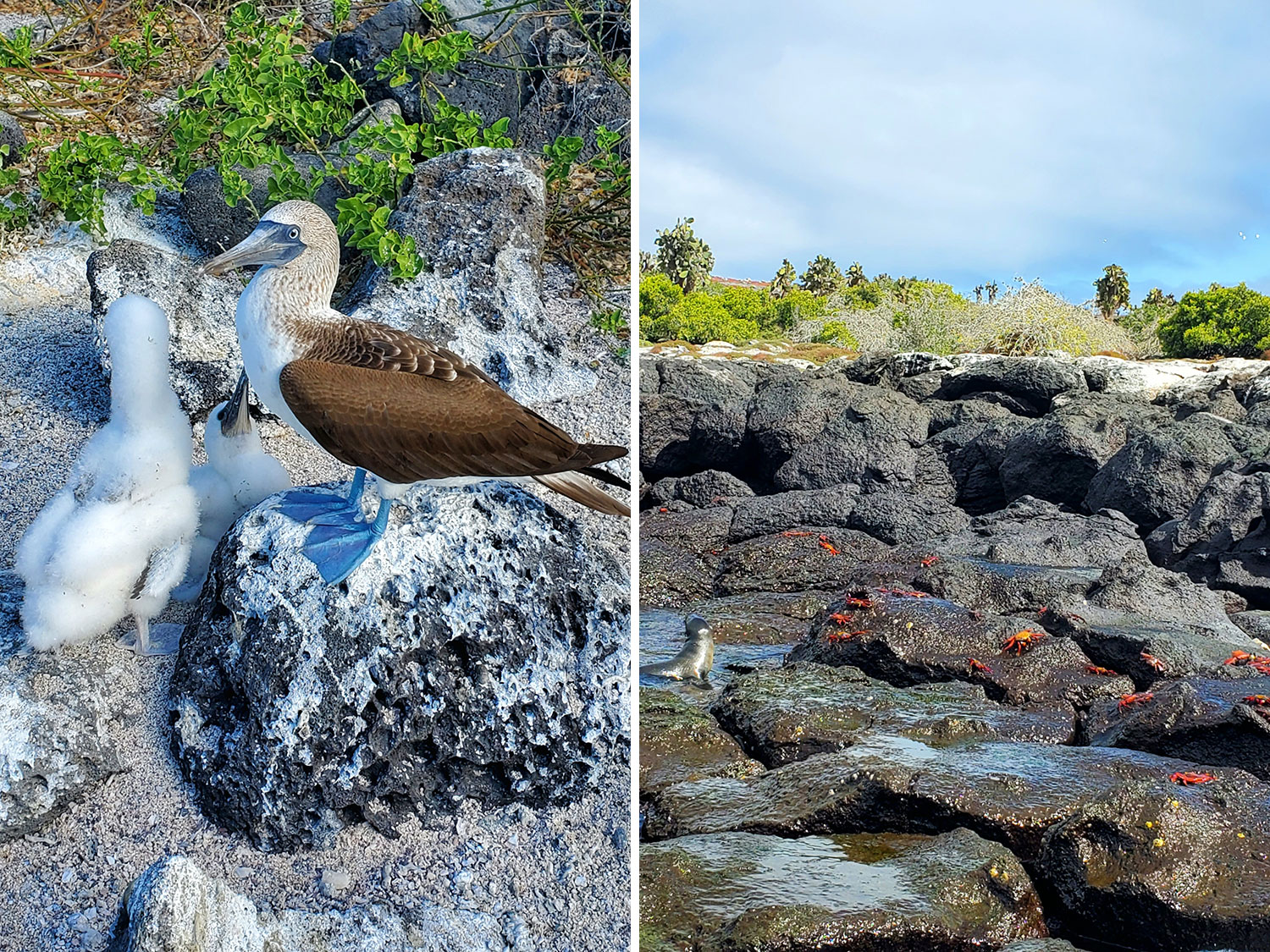
And this doesn't even account for the stunning underwater topography. If you love snorkeling, you'll be right in your element. We had five or six opportunities to don masks and fins (along with shorty wetsuits for the brisk water) and explore the creatures of the deep blue sea, including parrot fish, angel fish, clown fish, Hawksbill turtles, and surgeonfish. One day thousands of gray striped salema fish lingered near the sea floor. The school was so dense that from the surface it looked like gray rocks; I turned my head for a second when I spotted something else, and when I looked back they were gone. And the starfish? Many have 25 legs.
While the blue-footed boobies and Darwin's finches are probably the islands' most iconic species, I discovered a few I had never even heard of. The swallow tail gull has a forked tail and a distinctive red ring around its eyes. Sally Lightfoot crabs dot the black rocks along the water by the hundreds, their bright red bodies resembling blue crabs after they've been steamed. (These also appear in other parts of the Americas and are rumored to have been named after an agile Caribbean dancer.) And the Galapagos' marine iguanas are unique among modern lizards, basking in the sun and then swimming (!) to forage for the algae in their diet. They can also make themselves smaller—not just skinnier, but actually their entire body smaller in stature. Incredible.
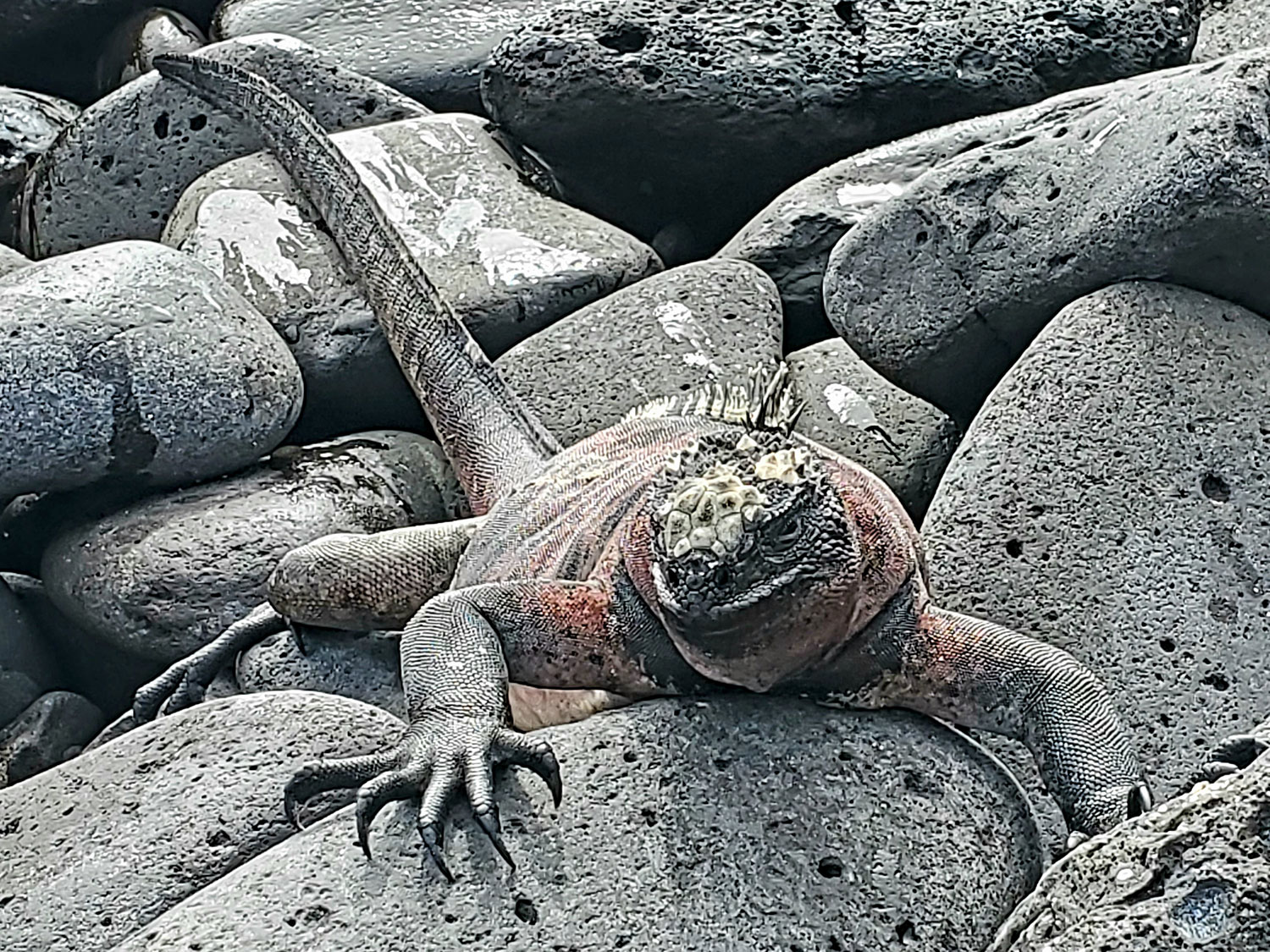
But back to those sea lions, which are everywhere. As soon as we arrived via ferry to Santa Cruz, we saw one napping basically inside an open-air restaurant. Every dinghy ride to the beach meant a whole herd of them sunning, playing, resting, and swimming. And they absolutely pose and preen when they see a human come along with a camera or phone. Did you know that they stay with their mothers for two to five years? Or that babies play and explore awkwardly like toddlers, flapping and frolicking in the shallow waters while mom is off looking for food? Or that the dominant adult male of a herd will relinquish the throne after a time, so to speak, to let a younger, stronger male have his moment? At every turn, Roberto shared fascinating facts on all the islands' flora and fauna.
One more thing: these are some of the rarest and most exotic species on the planet, so you'll want to capture them for posterity. But put down the camera from time to time and just observe. You'll be glad you did.
Make new friends
Intrepid Travel is known to attract affable, adventurous, well-traveled types from all walks of life. Our diverse group included couples, solo travelers, and families with teenagers from around the world. Since daily activities are interspersed with meals and down time, there is ample opportunity to get to know your Galapa-gang.
We compared countries visited over breakfast, shared bucket list destinations over lunch on the sundeck, and played raucous games of name that tune with our Spotify lists (and lots of wine) in the sitting room after dinner. I found this trip to be a great way to commune with like-minded peeps—and it took a trip to the middle of the Pacific Ocean to find a cool new friend who literally lives just a few miles from me. Such a small world.
Spend some time in Quito
On the day my tour started, I arrived early in the afternoon, took a nap, attended the Intrepid meeting, and then ventured out with a few people in my group to enjoy the tasting menu at Somos, helmed by chef Alejandra Espinoza. Dishes like larvae, ceviche, pork belly, grilled prawns, and paiche wrapped in banana leaves appeared on our table, and we paired them with pours of global wines. Book in advance, though, as this restaurant is very popular.
This tour also ends in Quito back at the Le Parc Hotel, so after freshening up our now tightlyknit group all went out to dinner at Miskay. The next morning before heading to the airport, I took an Uber to Ciudad Mitad del Mundo, or Middle of the World City, where a statue and yellow line marks the equator. I Googled it on the way and discovered that modern GPS measurements have shown that the actual location of the equator is around 700 feet away. No matter. Standing there in my new blue alpaca shawl holding a bottle of Latitud Cero beer made for a great photo opp. There is also a museum about Ecuador's indigenous people over the millennia, and vendors selling local souvenirs.
Don’t think—just go
The Galapagos was one of the first places during the pandemic to reopen to travelers, and it is ready to welcome you. If this itinerary sounds perfect to you but you are still on the fence, I recommend taking a cue from one of the native creatures. We learned that Blue-footed Booby chicks take a trust fall off the cliff to test their flying skills and leave the nest. Don't overthink it—it's the experience of a lifetime.
Intrepid Travel's Galapagos Explorer Grand Queen Beatriz starts at $4,550 per person in a standard queen room, inclusive of accommodations, most meals, roundtrip airfare from Quito, all inter-island transfers (bus, Zodiac, boat), and included activities. Not included is roundtrip airfare to Quito, lunch and dinner on the first and last evening, alcoholic beverages, gratuities, Galapagos National Park entrance, transit card, and incidentals.
